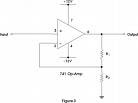 Negative feedback is used widely in instrumentation electronics, operational amplifiers and in various other streams of electronics. In negative feedback, a part of the output signal is injected back to the input, in antiphase; as shown in the picture on the left. As a result, the gain of the amplifier remains stable, the bandwidth (the frequency range) of its operation increases. In neural networks too, such type of negative feedback is quite common.
Negative feedback is used widely in instrumentation electronics, operational amplifiers and in various other streams of electronics. In negative feedback, a part of the output signal is injected back to the input, in antiphase; as shown in the picture on the left. As a result, the gain of the amplifier remains stable, the bandwidth (the frequency range) of its operation increases. In neural networks too, such type of negative feedback is quite common.The effector (efferent, motor) arm of nervous system, that determines an action, say your hand movement, does so via alpha motor neurons supplying the skeletal or voluntary muscles.
 After you have completed your hand moving job (be it the end of tying your shoelace knot or swatting that biting insect), your hand has to come back to its rest position. This task can be achieved with the use of an inhibitory interneuron (aka Renshaw cells). As shown in the adjoining figure, the yellow colored nerve fiber is the motor neuron which supplies a muscle (shown in brick red). This nerve liberates a neurotransmitter called acetylcholine, which brings about muscular contraction, after the chemical has combined with nicotinic receptors at the motor end plate. Lets make a long story short: we also see one offshoot from the same nerve fiber (also shown in yellow to imply continuity), which supplies another nerve (shown in green color). This nerve, the Renshaw cell or the inhibitory interneuron, secretes a neurotransmitter that has an inhibitory effect on the nerve it supplies. But what do we see? This nerve supplies the same excitatory nerve that initiated the contraction. As a result, contraction ceases. This type of negative feedback network is very common in physiology. The loop back network just described can be found in the spinal cord. Renshaw cells also inhibit surrounding neurons, thus sharpening contrast and focus of 'action'.
After you have completed your hand moving job (be it the end of tying your shoelace knot or swatting that biting insect), your hand has to come back to its rest position. This task can be achieved with the use of an inhibitory interneuron (aka Renshaw cells). As shown in the adjoining figure, the yellow colored nerve fiber is the motor neuron which supplies a muscle (shown in brick red). This nerve liberates a neurotransmitter called acetylcholine, which brings about muscular contraction, after the chemical has combined with nicotinic receptors at the motor end plate. Lets make a long story short: we also see one offshoot from the same nerve fiber (also shown in yellow to imply continuity), which supplies another nerve (shown in green color). This nerve, the Renshaw cell or the inhibitory interneuron, secretes a neurotransmitter that has an inhibitory effect on the nerve it supplies. But what do we see? This nerve supplies the same excitatory nerve that initiated the contraction. As a result, contraction ceases. This type of negative feedback network is very common in physiology. The loop back network just described can be found in the spinal cord. Renshaw cells also inhibit surrounding neurons, thus sharpening contrast and focus of 'action'.If we go further upstream, we can see a similar network in the brain. Before we actually do a movement, the cortical association areas in conjunction to the basal ganglia and the lateral cerebellum plans the movement (this has given birth to the thought controlled devices). This draft (of the plan) is then sent to the motor cortex(M1) and the premotor cortex of the brain which executes the actual action. But you know that any action you do, is overseen by the special senses such as the eye and also as a result of any action such as moving your leg, some receptors in the involved joint which calculates position sense are triggered (i.e they act like kind of pressure sensors). These overseers send these informations (visual cues, degree of stretching of the joint capsule etc) back to the premotor and motor cortex. They then modify or stop the action, in accordance with the input received.
Another instance of negative feedback is found in the cerebellum.
 The parallel fibers stimulate both the basket cells (so called because they wrap around in the form of a basket) and Purkinje cells. The basket cells also drive the Purkinje cells: but this time the response is an IPSP (Inhibitory Post Synaptic Potential) i.e it results in inhibition. This is known as feed-forward inhibition, for obvious reason.
The parallel fibers stimulate both the basket cells (so called because they wrap around in the form of a basket) and Purkinje cells. The basket cells also drive the Purkinje cells: but this time the response is an IPSP (Inhibitory Post Synaptic Potential) i.e it results in inhibition. This is known as feed-forward inhibition, for obvious reason.We have seen digital ICs do gating, such as NAND/NOR/OR etc and perform various kinds of Boolean logic. The TTL IC 7400N, for example, perform NANDing. Some descending neurons from the brain, which have inhibitory output, verges on the dorsal aspect of the spinal cord through which pain sensation ascends. This gating, by presynaptic inhibition, may modify pain sensation.
Like negative feedback, positive feedback is also utilized in electronics (oscillators, for example) and in physiology (estradiol positive feedback in LH surge that brings about ovulation is one example). Brothers in arms, isn't it?
Last modified: July 7, 2008
Reference: hyper-links, unless specifically mentioned
No comments:
Post a Comment